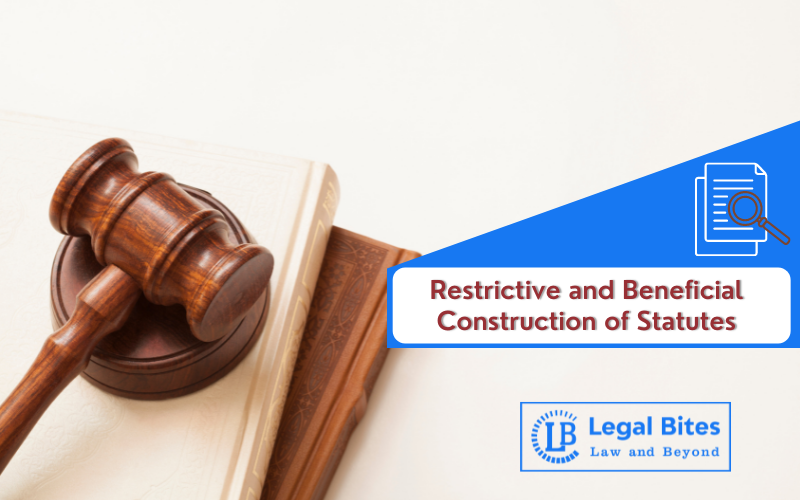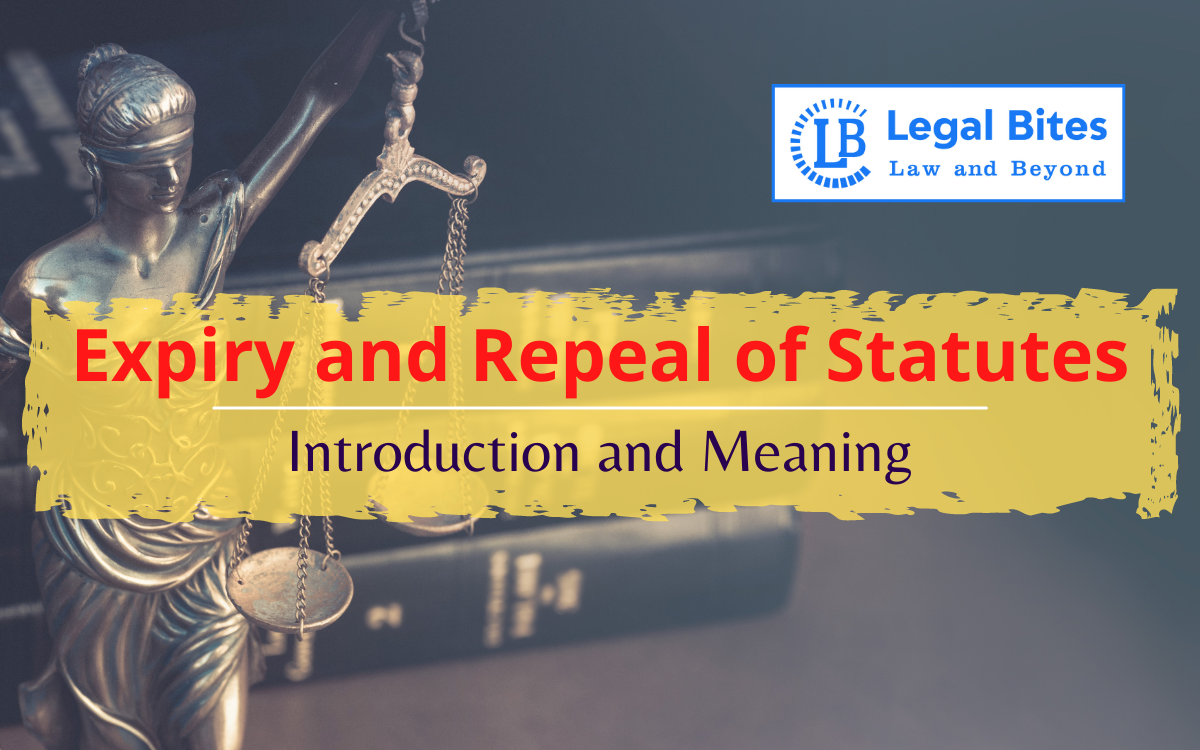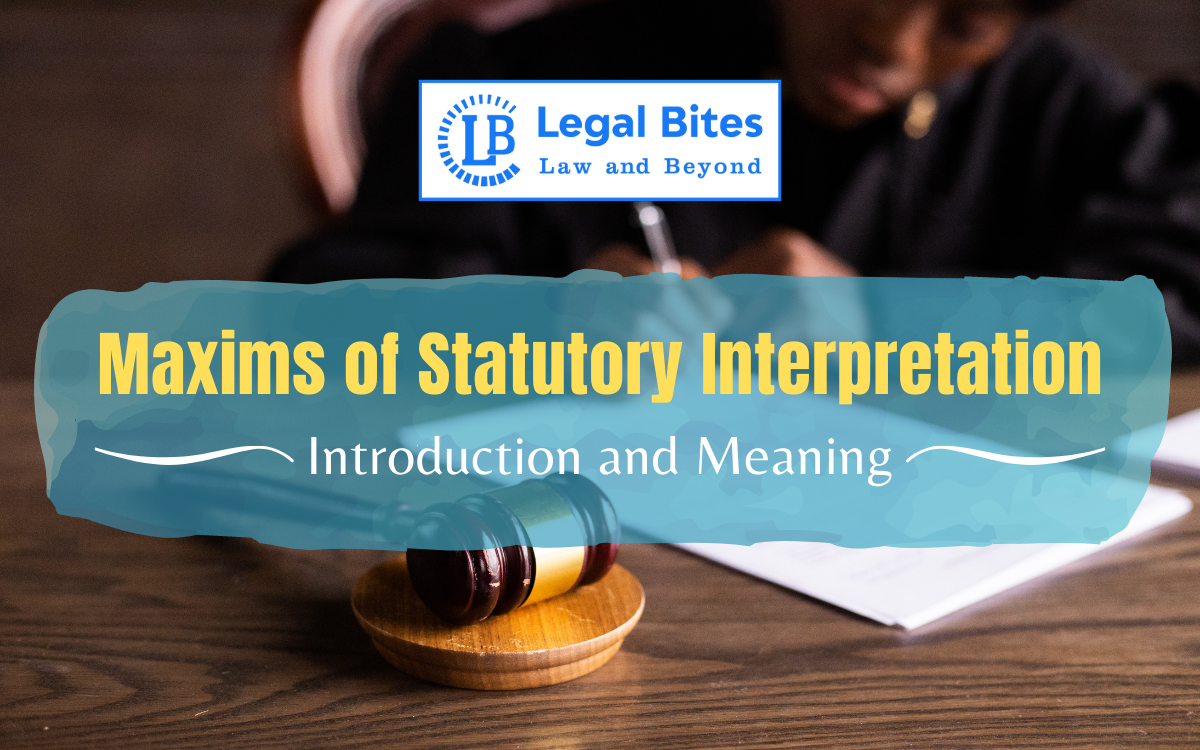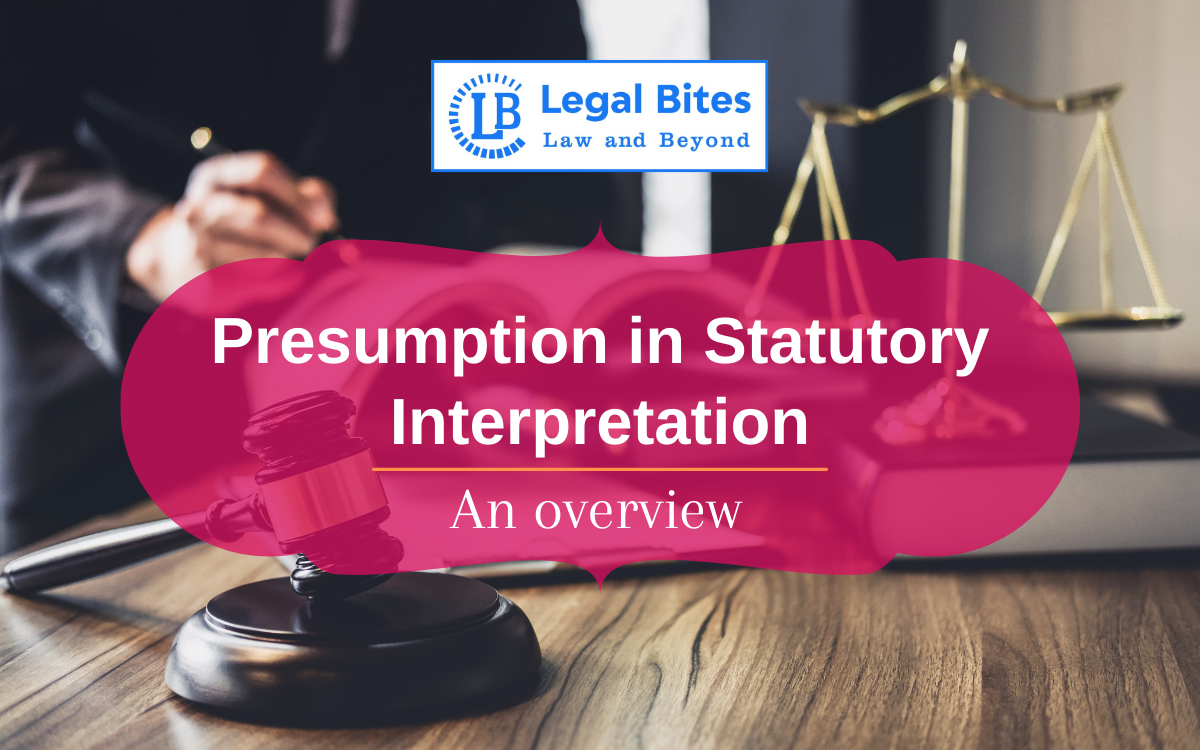Important Maxims related to Interpretation of Statutes
This article discusses all the Important Maxims related to the Interpretation of Statutes.;

Important Maxims related to Interpretation of Statutes | Overview Ejusdem Generis Noscitur a Socis Ut Res Magis Valeat Quam Pereat Contemporanea Exposito Est Fortissima In Lege Reddendo Singula Singulis Expresssio Unius Est Exclusio Alterius 1. Ejusdem Generis According to the Black’s Law Dictionary (8th edition, 2004) the principle of Ejusdem Generis is where general words follow an enumeration of persons or things by words of a particular and specific meaning. Such...
Important Maxims related to Interpretation of Statutes | Overview
- Ejusdem Generis
- Noscitur a Socis
- Ut Res Magis Valeat Quam Pereat
- Contemporanea Exposito Est Fortissima In Lege
- Reddendo Singula Singulis
- Expresssio Unius Est Exclusio Alterius
1. Ejusdem Generis
According to the Black’s Law Dictionary (8th edition, 2004) the principle of Ejusdem Generis is where general words follow an enumeration of persons or things by words of a particular and specific meaning. Such general words are not to be construed to their widest extent but are to be held as applying only to persons or things of the same general kind or class as those specifically mentioned. It is a canon of statutory construction, where general words follow the enumeration of particular classes of things. The general words will be construed as applying only to things of the same general class as those enumerated.
The expression Ejusdem Generis means of the same kind. Normally, general words should be given their natural meaning like all other words unless the context requires otherwise. But when a general word follows specific words of a distinct category, the general word may be given a restricted meaning of the same category. The general expression takes its meaning from the particular preceding expressions because the legislature, by using the particular words of a distinct genus, has shown its intention to that effect.
This principle is limited in its application to the general word following less general word only. If the specific words do not belong to a distinct. Genus, this rule is inapplicable. Consequently, if a general word follows only one particular word, that single particular word does not constitute a distinct genus and, therefore, the Ejusdem Generis rule cannot be applied in such a case.
Exceptional stray instances are, however, available where a one-word genus has been created by the courts and the general word following such a genus given a restricted meaning. If the particular words exhaust the whole genus, the general word following these particular words is construed as embracing a larger genus. The principle of Ejusdem Generis is not a universal application. If the context of legislation rules out the applicability of this rule, it has no part to play in the interpretation of general words. The basis of the principle of Ejusdem Generis is that if the legislature intended general words to be used in an unrestricted sense, it would not have bothered to use particular words at all.
2. Noscitur a Sociis
The principle of Noscitur a Sociis is a rule of construction. It is one of the rules of the language used by the court to interpret legislation. This means that the meaning of an unclear word or phrase should be determined by the words immediately surrounding it. In other words, the meaning of a word is to be judged by the company it keeps. The questionable meaning of a doubtful word can be derived from its association with other words. It can be used wherever a statutory provision contains a word or phrase that is capable of bearing more than one meaning.
This rule is explained in Maxwell on the interpretation of statutes (12th edition ) in the following words “ When two or more words susceptible of analogous meaning are coupled together, they are understood to be used in their cognate sense.” The words take their colour from and are quantified by each other, the meaning of the general words being restricted to a sense analogous to that of the less general.
3. Ut Res Magis Valeat Quam Pereat
The maxim “Ut Res Magis Valeat Quam Pereat” is a rule of construction which literally means the construction of a rule should give effect to the rule rather than destroy it. i.e., when two constructions are possible from a provision, of which one gives effect to the provision, and the other renders the provision inoperative, the former, which gives effect to the provision, is adopted, and the latter is discarded.
It generally starts with a presumption in favour of constitutionality and prefers a construction that embarks the statute within the competency of the legislature. But it is to be noted that when the presumption of the constitution fails, then the statutes cannot be rendered valid or operative accordingly. The landmark case of Indra Sawhney (2000), where the Supreme Court struck down the state legislation as it was violative of the constitution and ultra-vires of the legislative competency.
4. Contemporanea Exposito Est Fortissima In Lege
In the legal context, the maxim Contemporanea Expositio Est Optima Et Fortissima In Lege means that the best way to construe a document is to read it as it would have read when made. It is said that the best exposition of a statute or any other document is that which it has received from contemporary authority.
This maxim has been confirmed by the Apex Court in Desh Bandhu Gupta v. Delhi Stock Exchange Asson. Ltd. AIR 1979 SC 1049, 1054. Contemporanea exposito is a guide to the interpretation of documents or statutes. It is one of the important external aids for interpretation. However, great care must be taken in its application. When a document is executed between two parties, their intention can be known by their conduct at the time and after the execution of the instrument.
Where the words of the deed are ambiguous, the court may call in the acts done under it as a clue to the intention of the parties. Their acts are the result of usages and practices in society. Therefore their acts are useful as an external aid to the interpretation of the deed. This principle may also be applied in the case of statutes.
“Contemporanea expositio est optima et fortissinia in lege” means usage or practice developed under a statute is indicative of the meaning ascribed to its words by contemporary opinion. The maxim Contemporanea exposition, as laid down by Lord Coke, was applied to construing ancient statutes but usually not applied to interpreting Acts or statutes which are comparatively modern.
The meaning publicly given by contemporary or long professional usage is presumed to be true, even where the language has etymologically or popularly a different meaning. It is obvious that the language of a statute must be understood in the sense in which it was understood when it was passed, and those who lived at or near that time when it was passed may reasonably be supposed to be better acquainted than their descendants with the circumstances to which it had a relation, as well as with the sense then attached to legislative expressions. Usages and practices developed under a statute are indicative of the meaning ascribed to its words by contemporary opinion and in the case of an ancient statute, such reference to usage and practice is admissible.
He said a notorious uniform practice continued under an old statute and inaction of the legislature to amend the same are important factors to show that the practice so followed was based on the correct understanding of the law. According to Lord Ellenborough, Communis opinio is evidence of what the law is. When the practice receives judicial or legislative approval, it gains additional weight and is to be more respected.
5. Reddendo Singula Singulis
“Reddendo singula singulis” is a Latin term that means referring to each phrase or expression to its corresponding object. In simple words, “reddendo singula singulis” means that when a list of words has a modifying phase at the end, the phrase refers only to the last. It is a rule of construction usually used in distributing property.
Where there are general words of description, following a record of particular things, such general words are to be construed distributively, and if the general words will apply to some things and not to others, the general words are to be applied to those things to which they will, and not to those to which they will not apply; that is to say, each phrase, word or expression is to be referred to its suitable objects.
The best example of reddendo singula singulis is quoted from Wharton’s Law Lexicon, “If anyone shall draw or load any sword or gun, the word draw is applied to sword only and the word load to gun only, the former verb to former noun and latter to latter, because it is impossible to load a sword or to draw a gun, and so of other applications of different sets of words to one another.”
The “reddendo singula singulis” principle concerns the use of words distributively. Where a complex sentence has more than one subject and more than one object, it may be the right construction to provide each to each, by reading the provision distributively and applying each object to its appropriate subject. A similar principle applies to verbs and their subjects and to other parts of speech.
6. Expresssio Unius Est Exclusio Alterius
“Expressio unius est exclusio alterius” is a Latin phrase that means express mention of one thing excludes all others. This is one of the rules used in the interpretation of statutes. The phrase indicates that items not on the list are assumed not to be covered by the statute. When something is mentioned expressly in a statute, it leads to the presumption that the things not mentioned are excluded. This is an aid to the construction of statutes.





